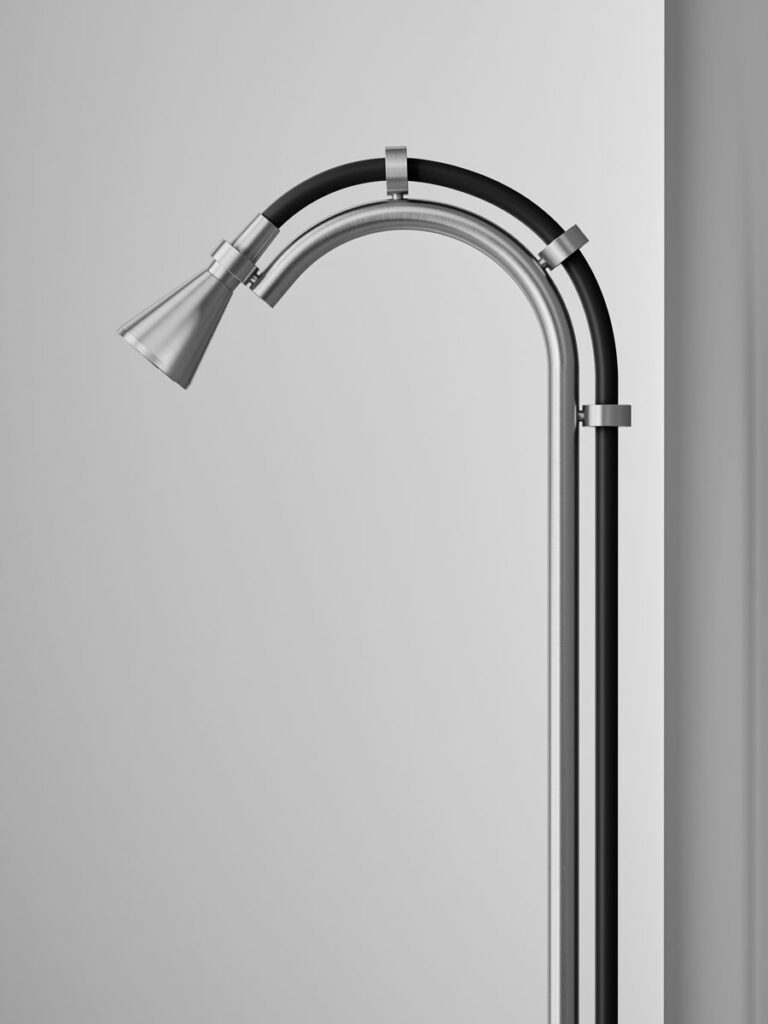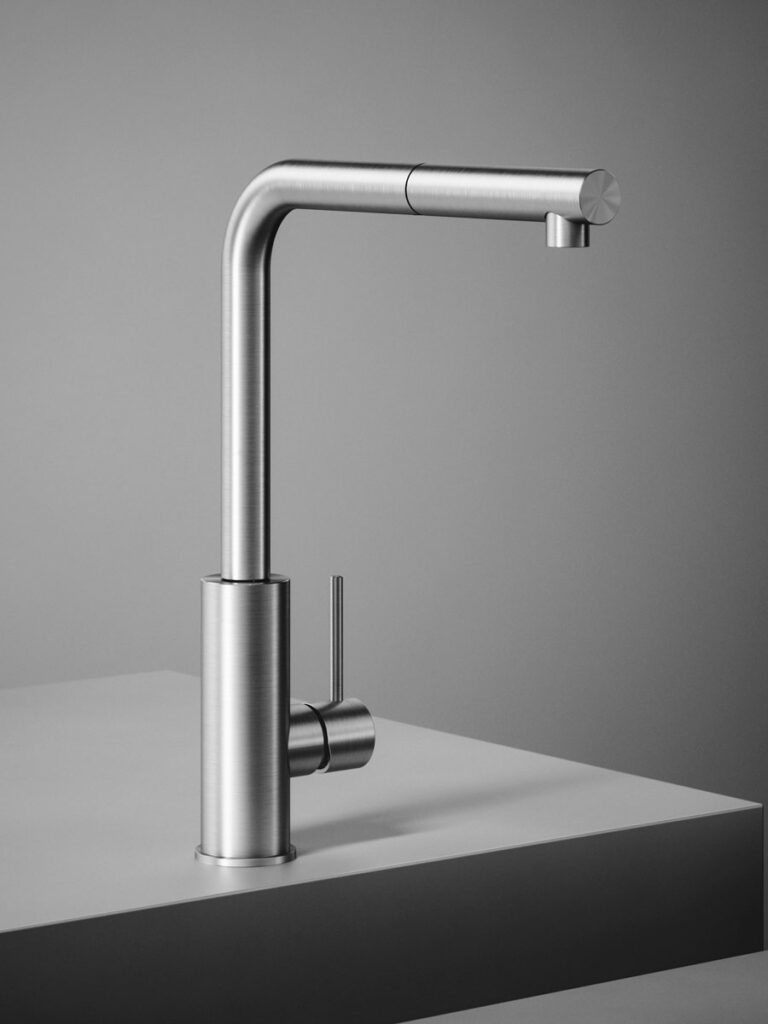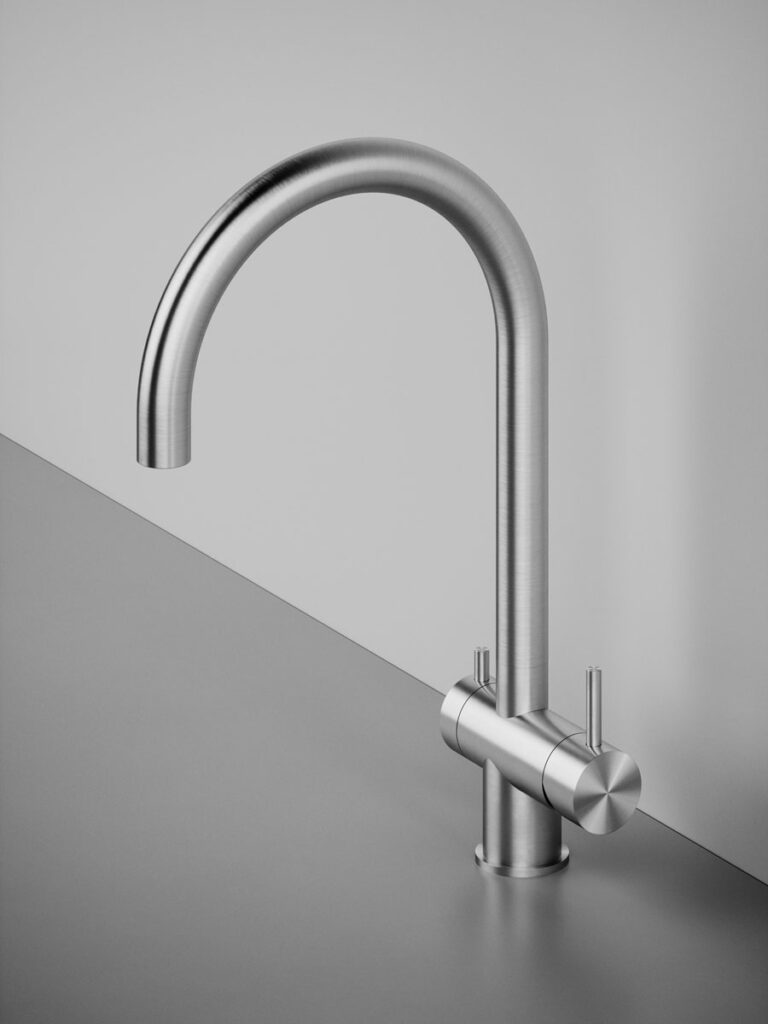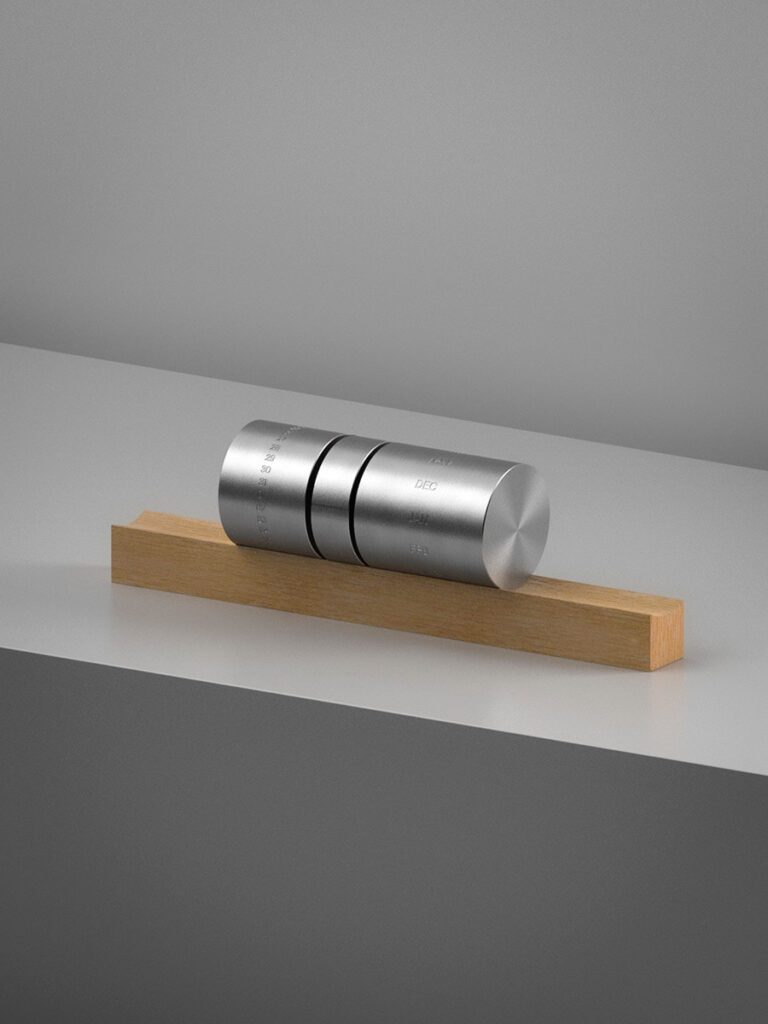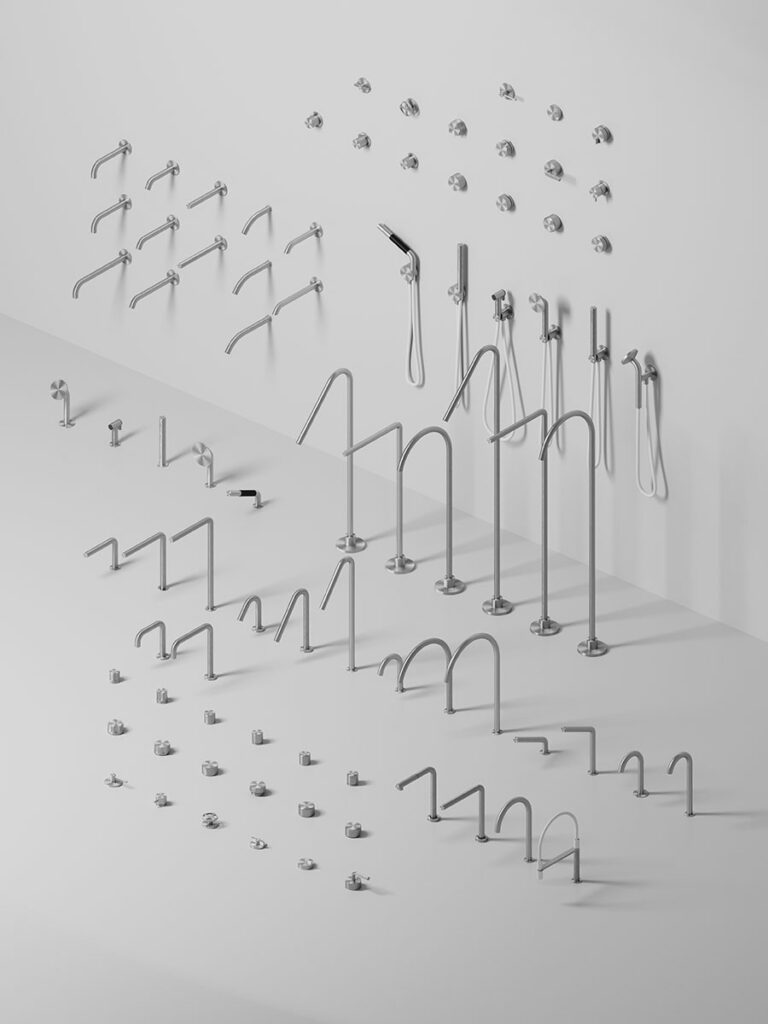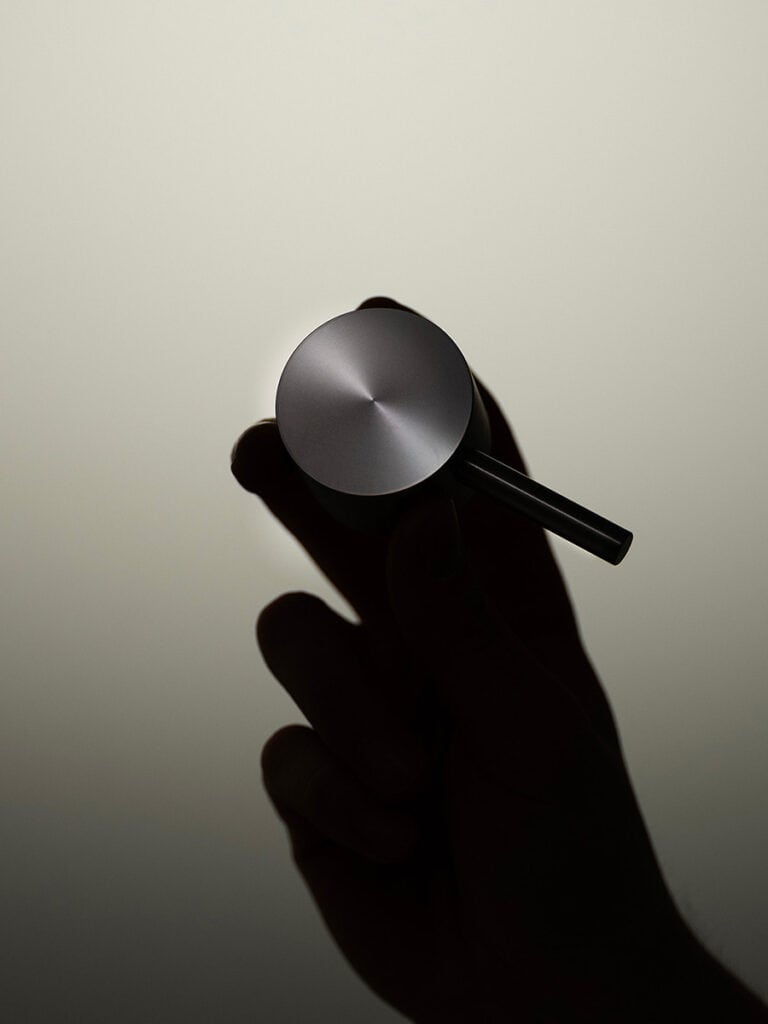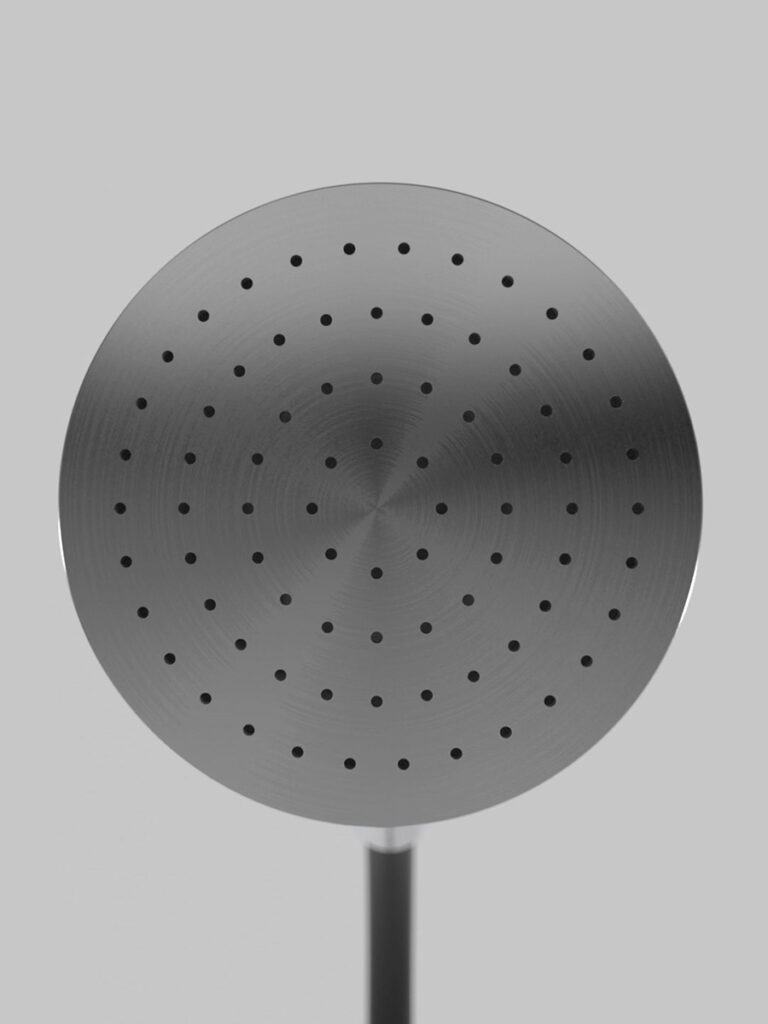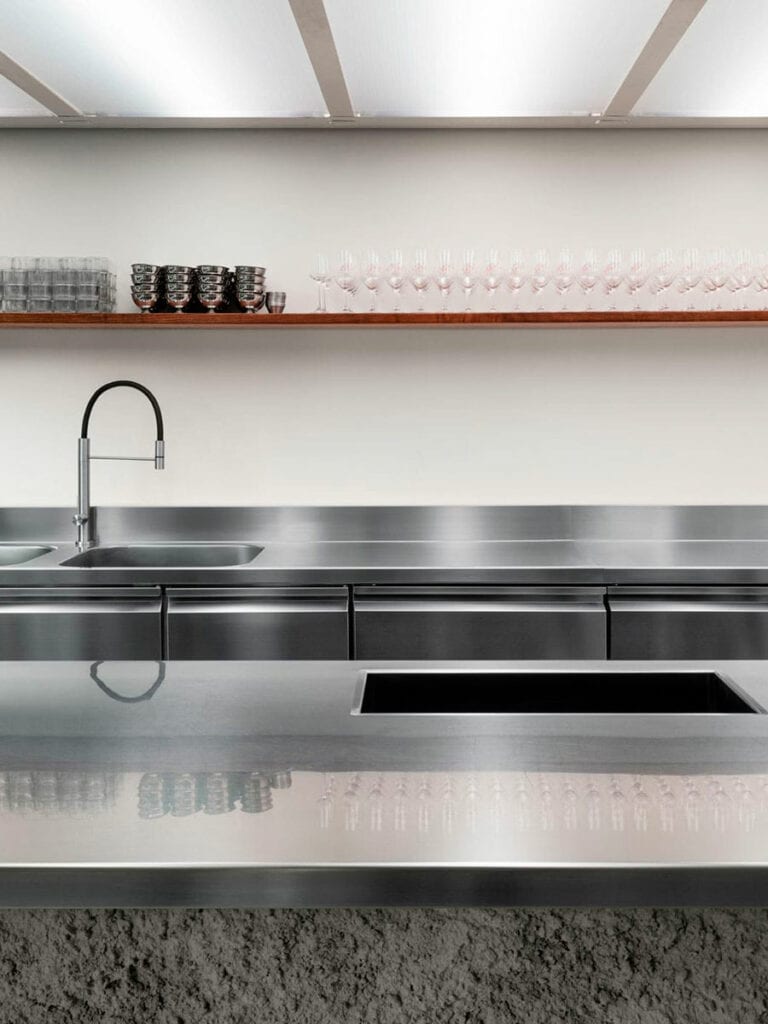Care and Maintenance of Stainless Steel Surfaces
Quadro srl
REV1-2025
QuadroDesign products are made of stainless steel, a noble and highly durable material, chosen for its intrinsic durability and natural ability to remain intact over time without the need for protective coatings or surface treatments, with the exception of PVD finishes. Stainless steel owes its corrosion resistance to the presence of a passive layer, thin but extremely stable, which forms spontaneously when the material comes into contact with oxygen in the air or water. This surface film is self-healing: if slightly damaged, it tends to regenerate on its own. However, improper maintenance, the use of aggressive or abrasive products, and the accumulation of limescale can compromise this natural protection, exposing the metal to oxidation and deterioration.
For routine cleaning, it is sufficient to use warm water and a neutral detergent applied with a soft cloth (microfiber or cotton). After cleaning, it is essential to rinse thoroughly and dry the surface to avoid the formation of streaks and limescale residues. This simple habit, if done regularly, is the best way to preserve stainless steel.
In the presence of limescale deposits, a solution of equal parts white vinegar and water can be used. Apply with a soft cloth, let it sit for a few minutes, rinse thoroughly, and dry carefully. Alternatively, a 5% citric acid solution can be used.
Each QuadroDesign faucet includes a dedicated key for aerator removal. It is advisable to periodically disassemble the aerator, soak the parts in a solution of water and vinegar for about 20 minutes, and remove residues with a soft brush. This operation maintains efficient water flow and prevents limescale buildup.
Many shower heads and hand showers are equipped with silicone nozzles designed to facilitate limescale removal. Simply apply light pressure with your fingers on each nozzle to mechanically detach deposits. Then rinse the entire surface thoroughly.
PVD finishes, although very resistant, require even more delicate treatment than uncoated stainless steel. Use only warm water and neutral soap, avoiding any abrasive product or chemical substance. In case of limescale, locally apply a very diluted vinegar solution (one part vinegar to four parts water), let sit briefly, then rinse and dry with a soft cloth.
– Do not use bleach, chlorine, ammonia, concentrated acids (phosphoric, hydrochloric, pure acetic), or detergents containing such substances
– Avoid using steel wool pads, abrasive sponges, or any tools that might scratch the surface
– Do not apply detergents directly to the metal: it is preferable to moisten the cloth first
– Do not leave wet cloths or stagnant water in prolonged contact with the surface
– Avoid mixing different detergents, as they may react with each other and produce harmful substances
– Do not use bicarbonate or insoluble abrasive powders
In the presence of surface oxidation or ferrous contamination (e.g., due to contact with non-stainless steel tools), professional intervention with pickling paste followed by rinsing with demineralized water and thorough drying may be necessary. In more severe cases, re-passivation or professional surface polishing can be considered. Proper maintenance, based on simple but consistent actions, allows stainless steel to maintain its beauty and technical performance over time, even in humid environments and under intensive use.


